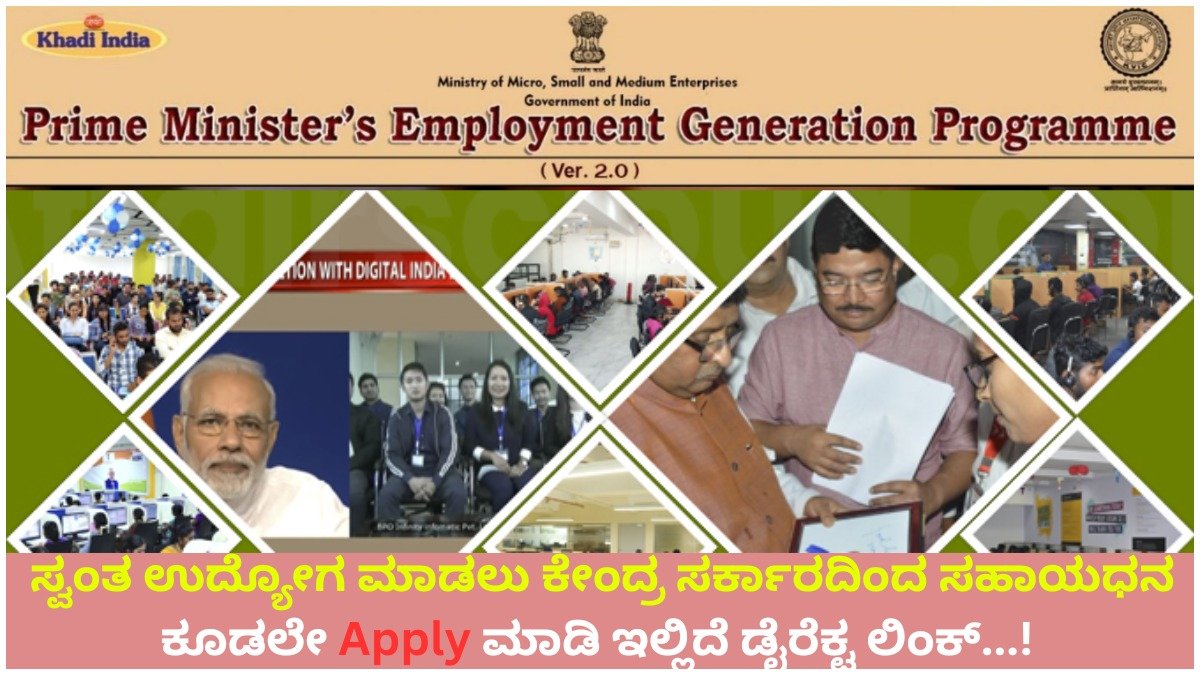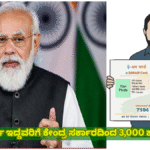Starting a business is one of the most rewarding paths toward financial independence and job creation. However, many aspiring entrepreneurs struggle with one common challenge: access to finance. To bridge this gap and encourage self-employment, the Government of India launched a flagship initiative known as the Prime Minister’s Employment Generation Programme (PMEGP).
This scheme is designed to provide financial support, in the form of loans and subsidies, to individuals who wish to start small or micro-level enterprises. By doing so, it not only encourages entrepreneurship but also generates employment opportunities across rural and urban India.
In this detailed guide, we’ll cover everything you need to know about PMEGP — from eligibility and benefits to application procedures, business ideas, and tips for success.
What is PMEGP?
The Prime Minister’s Employment Generation Programme (PMEGP) is a credit-linked subsidy programme administered by the *Ministry of Micro, Small and Medium Enterprises (MSME). At the national level, the scheme is managed by the **Khadi and Village Industries Commission (KVIC), while state-level implementation is carried out through *KVIC State Directorates, District Industries Centres (DICs), and banks.
The main objective of PMEGP is to:
- Encourage self-employment among unemployed youth, women, and underprivileged sections of society.
- Support grassroots entrepreneurship by providing easy access to formal credit.
- Generate sustainable jobs in both rural and urban areas.
- Promote inclusive development by giving financial support to marginalized communities and first-time entrepreneurs.
Key Features of the PMEGP Scheme
- Loan Limits
- Up to ₹25 lakh for manufacturing enterprises.
- Up to ₹10 lakh for service-sector enterprises.
- Subsidy Support
- Government subsidy ranging from 15% to 35% depending on the applicant’s category and whether the enterprise is in a rural or urban location.
- Collateral-Free Loans
- For projects up to ₹10 lakh, no collateral is required, making it easier for first-time entrepreneurs without assets to access credit.
- Interest Rates
- Loans are provided at standard bank interest rates (typically between 11%–12% per annum, but negotiable depending on the bank).
- Repayment Flexibility
- Repayment period generally ranges from 3 to 7 years, with a moratorium period during which repayment can be deferred.
- Entrepreneurship Development Training
- Applicants must undergo a mandatory 10-day training programme that equips them with essential business management skills.
Eligibility Criteria for PMEGP
PMEGP is open to a wide range of individuals and organizations, provided they meet the conditions laid down by the government:
- Age: Minimum 18 years.
- Education: At least 8th-grade pass (required for projects above ₹10 lakh in manufacturing and ₹5 lakh in services).
- Eligible Applicants:
- Individual entrepreneurs
- Self-help groups (SHGs)
- Societies registered under the Societies Registration Act, 1860
- Production cooperative societies
- Charitable trusts
Note: Applicants who have already availed benefits under other central government subsidy-linked schemes (such as PMRY, REGP, etc.) are not eligible.
Step-by-Step Process: How to Apply for PMEGP
Launching a business under PMEGP involves a structured process. Below is a simplified step-by-step guide:
1. Identify a Business Idea
The first step is to select a business activity that qualifies under PMEGP. The scheme supports a wide range of industries such as:
- Agro-based industries – flour mills, food processing, organic farming.
- Service enterprises – repair shops, beauty parlours, internet cafés.
- Handicrafts and cottage industries – pottery, soap making, candle making.
- Textile-related units – tailoring shops, garment production.
- Small-scale manufacturing – agarbatti making, bakery, packaging units.
2. Prepare a Project Report
A detailed project report (DPR) is mandatory and should cover:
- Business overview
- Estimated costs
- Break-even analysis
- Market demand
- Revenue projections
- Employment generation potential
This report is critical as banks evaluate your proposal based on its viability.
3. Apply Online
Applications must be submitted via the official PMEGP portal: PMEGP e-Portal
Steps include:
- Register as a new applicant.
- Fill in personal and project details.
- Upload required documents (ID proof, educational certificate, caste certificate if applicable, project report).
- Submit application online.
4. Attend Entrepreneurship Development Training (EDP)
If shortlisted, applicants must undergo a 10-day Entrepreneurship Development Programme organized by KVIC or other recognized institutes. Training modules typically cover:
- Business planning
- Bookkeeping and accounts
- Marketing strategies
- Legal compliance
- Basics of entrepreneurship
5. Loan Sanction and Disbursement
Once training is completed:
- Your project is forwarded to a partner bank.
- The bank evaluates and sanctions the loan.
- Government subsidy is credited to a special account (with a lock-in of 3 years).
- You receive the loan amount (minus subsidy).
This ensures financial stability for your startup while reducing repayment burden.
Popular Low-Investment Businesses under PMEGP
Many entrepreneurs prefer to start small businesses with minimal investment. Here are some practical ideas supported under PMEGP:
| Business Idea | Approx. Investment | Suitable For |
|---|---|---|
| Tailoring Unit | ₹1–2 lakh | Urban & Rural areas |
| Soap/Candle Making | ₹2–3 lakh | Home-based ventures |
| Mobile Repair Shop | ₹2 lakh | Semi-urban settings |
| Pickle/Papad Unit | ₹1.5 lakh | Women entrepreneurs |
| Beauty Parlour | ₹2–3 lakh | Urban & Rural women |
| Agarbatti Making | ₹1–2 lakh | Rural entrepreneurs |
These ideas are low-risk, require basic skills, and can generate profits quickly.
Advantages of PMEGP
- Collateral-Free Finance
Access to loans without pledging assets is a major benefit for new entrepreneurs. - Reduced Repayment Burden
Subsidy support lowers the effective amount repayable. - Encourages Self-Reliance
Empowers individuals to become independent job creators rather than job seekers. - Rural Development
Provides opportunities in villages, reducing migration to cities. - Support for Women & Weaker Sections
Higher subsidy rates for women, SC/ST, OBC, and minorities promote inclusive growth. - Skill Development
Mandatory training ensures entrepreneurs gain essential business management knowledge.
Tips for Running a Successful PMEGP Business
- Conduct Market Research: Understand your target customers, pricing trends, and competition before launching.
- Start Small and Scale Gradually: Begin with a manageable unit and expand using profits instead of over-borrowing.
- Maintain Proper Accounts: Keeping records of income, expenses, and inventory builds financial discipline and credibility with banks.
- Leverage Digital Platforms: Promote your business using WhatsApp Business, Facebook, or Instagram to reach local customers at low cost.
- Focus on Quality: Delivering quality products or services ensures repeat customers and long-term growth.
Frequently Asked Questions (FAQs)
Q1. What is the PMEGP scheme and who launched it?
The Prime Minister’s Employment Generation Programme (PMEGP) is a flagship initiative by the Ministry of MSME, Government of India, to promote entrepreneurship by providing loans and subsidies for micro and small enterprises.
Q2. How much subsidy can I get?
Depending on your category and location, you can get 15% to 35% subsidy.
Q3. What is the maximum loan amount?
- ₹25 lakh for manufacturing units.
- ₹10 lakh for service-based units.
Q4. Is collateral required?
No, projects up to ₹10 lakh do not require collateral.
Q5. Who can apply?
Indian citizens above 18 years of age with minimum educational qualifications, SHGs, trusts, cooperative societies, and registered societies are eligible.
Conclusion
The PMEGP scheme is a game-changer for aspiring entrepreneurs who want to establish their own businesses but lack adequate funding. By offering a unique combination of loans, subsidies, and entrepreneurship training, it reduces financial risk and promotes sustainable development.
Whether you are a student, homemaker, unemployed youth, or someone looking to expand a small venture, PMEGP offers a powerful opportunity to turn your ideas into reality. With careful planning, dedication, and effective use of available resources, you can create a profitable enterprise that not only supports your family but also contributes to local employment and economic growth.











